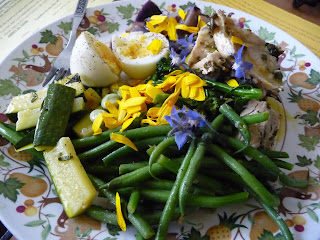 as U.S. citizens just through their questions about our culture and language. I also learn about myself by comparing their challenges to my own. It can be very humbling. Some of these visitors are college or language students, others are professors, researchers or professionals in various disciplines, still others are immigrants with little education but are willing to work hard. Many are parents sharing the experience of a new country with their children. Most arrived by plane or bus, often with multiple connections. Still others walked through deserts or came to our country in tiny boats, risking their lives.
as U.S. citizens just through their questions about our culture and language. I also learn about myself by comparing their challenges to my own. It can be very humbling. Some of these visitors are college or language students, others are professors, researchers or professionals in various disciplines, still others are immigrants with little education but are willing to work hard. Many are parents sharing the experience of a new country with their children. Most arrived by plane or bus, often with multiple connections. Still others walked through deserts or came to our country in tiny boats, risking their lives.How Do You Say...?
Kids are like little sponges soaking up language and culture with enviable speed and agility. When I'm in countries where I don't know the language, I find myself envying small children who speak and comprehend far better than I. Oh, to have their open minds and no fear of making a fool of myself. It's puzzling that our education system doesn't require foreign languages in kindergarten and primary grades when our brains are most receptive to learning them.
We don't consider how difficult the English language is until we have to explain it to speakers of other languages. So many everyday sayings ("That really threw me for a loop," or, "He won hands down," for example) are tricky to explain. Or why words that are spelled differently and have different meanings sound the same (their/there/they're, would/wood, cents/sense/scents, etc.). Or, why does English have so many silent letters in words (pneumonia, bright, could, etc.)?
In this era of increasing isolationism, led by some politicians and political candidates, I am reminded how surprising and revealing encounters with certain foreigners have been in my own life. More than once, I've had to rethink my attitude.
Once was when I met someone from a country I tended to view negatively for political reasons. While I still have negative views about the politics of that country, I learned a lot from her in long conversations over coffee or on walks. Probably without realizing it,she taught me to see her country's citizens as individuals who don't always agree with their governments, just as we don't ours. We may still disagree on certain things, but we both learned from each other. In other instances, I've met people from places I've never visited and probably never will. Still, learning about everyday lives and traditions and tasting some of their foods reveals a richness that gives depth to the name of the place every time I hear it now.
Stranger in a Strange Land
When I was young, I had the good fortune to live and work in a few other countries. It taught me how one's senses are heightened in such situations and foreigners notice things that locals often take for granted. When I meet foreigners now I have a greater appreciation for how exhausting it is to be somewhere where a different language is spoken. You are constantly trying to understand or search for the correct words and, initially, translate everything in your head. It's such a relief when you can finally understand without having to go through the translating step. I was often struck by how kind people were to me when I was the foreigner and how patient they were when I was learning their language. Eventually, I realized how they were correcting my errors without being obvious., or making me feel like a fool.
Everyday experiences like shopping for food in stores that don't carry what you're used to preparing, or getting places without your own car or knowing the language well enough to find your way or ask for help can be overwhelming. Finding an apartment or house is all the more difficult, yet critical. The kindness of just one stranger who helps in a seemingly small way (to them), such as giving directions or explaining how to prepare an unfamiliar food, can impact one's perception of an entire place. Subtle discrimination can have equally profound effects.
Travel abroad exposes us to negative experiences, as well. We can find ourselves very much in the minority, the seemingly stupid one because we don't speak the language, or we may face prejudice because of what we look like or the place we represent in the eyes of someone who doesn't know much about our country, except from negative headlines. Or, someone judges you by the negative experience they've had with others "like you." I've been in that situation too. It's extremely uncomfortable, both frustrating and instructive. Sometimes you can change someone's attitude, if they will talk with you. Others you can't.
You don't have to travel elsewhere to get that jolt of fresh perspective. We can get it by opening our doors and minds to new people and experiences, be they people from other countries or states, or even people we with work with or live near, but don't know yet.
Just in writing this, I realize I still have much to learn about foreigners in my own community, and even some neighbors. And now I know just who I'm going to challenge myself to get to know better.



























